SHOP DRY EYE CARE TODAY!
Use code VISIONARYEYE20 at checkout for 20% off!
As parents, we all wish to see our children thrive and excel in every aspect of their lives, and ensuring they have optimal vision is a crucial part of their overall development and well-being. At Visionary Eye Center in Reno, we understand the importance of early detection in preventing and treating pediatric vision problems. This guide is designed to help parents spot the early warning signs of vision issues in children, emphasizing the critical role of pediatric eye exams.
One of the first indicators that a child may be experiencing vision problems is a noticeable increase in squinting, blinking, or eye rubbing. These actions can be a child's instinctive response to try to clear their vision or relieve discomfort caused by eye strain. Frequent squinting might suggest your child is struggling to see clearly at a distance, indicative of myopia (nearsightedness), while difficulty focusing on close objects might point towards hyperopia (farsightedness) or astigmatism. Recognizing these behaviors as potential signs of vision issues is the first step towards seeking a pediatric eye exam.
Eye rubbing, especially if it's persistent, could also indicate eye fatigue or irritation. While it's normal for anyone to rub their eyes occasionally, constant rubbing might suggest an underlying issue that warrants a professional evaluation.

Children who experience discomfort when performing tasks that require near vision, such as reading or playing with small toys, may start to avoid these activities. This avoidance can be a subtle sign of vision problems. Parents might notice their child feeling frustrated or showing a lack of interest in learning activities they previously enjoyed. If your child is avoiding homework, reading, or engaging in detailed play, it could be a sign that these tasks are visually challenging for them due to uncorrected vision issues.
Another common sign that can indicate a vision problem is when a child consistently holds reading materials or digital devices too close to their face or sits nearer to the television than is typical. This behavior may suggest that your child is trying to compensate for blurred distance vision, a hallmark symptom of myopia. While many children like to sit close to the TV for fun, if your child seems to need to sit close to see clearly, it's time to schedule an eye exam.
Listen closely if your child frequently complains of headaches or eye pain, particularly after reading, doing homework, or spending time on a computer or tablet. These complaints can often be attributed to eye strain resulting from uncorrected vision problems. A comprehensive pediatric eye exam can help determine whether vision issues are the cause of your child's discomfort, providing a path to relief through proper vision correction.
If you've noticed any of these signs in your child, it's important to take action by scheduling a pediatric eye exam. Early detection and treatment are key to ensuring your child's vision development is on track. Visionary Eye Center in Reno is here to support your family with comprehensive pediatric eye care services. We encourage parents to observe their child's visual behavior and seek professional advice when concerns arise.
Regular pediatric eye exams are a vital part of children's health care routine, helping to catch and correct vision issues early. Contact us today to schedule an exam and take the first step towards safeguarding your child's vision.
Embarking on the journey of your child’s eye care can bring a mix of emotions, from curiosity to a bit of anxiety. Understanding what happens during a pediatric eye exam is crucial to demystifying the process and ensuring both you and your child approach this important health milestone with confidence. At Visionary Eye Center in Reno, we’re committed to providing a comforting and child-friendly environment for your family’s eye care needs. Here’s what you can expect during your child's first visit, helping to ease any apprehensions and make this experience a positive one.

Walking through the doors of Visionary Eye Center, you'll find a space designed with your child's comfort and curiosity in mind. The first pediatric eye exam is far from daunting; it's a non-invasive, engaging experience. Our eye care professionals are trained to work with children, explaining procedures in a way that’s easy to understand and ensuring that your child feels safe and valued throughout their visit. This initial appointment is not just about vision screening; it's an opportunity to build trust and lay the foundation for a lifetime of eye health.
From the moment you schedule your appointment, consider this an opportunity to talk to your child about the importance of seeing clearly and taking care of their eyes. Present the visit as a positive adventure, one where they'll get to play some "looking games" and maybe even look at some fascinating eye equipment, like the "pirate scope" or the "camera that takes pictures of your eye".
Preparation can make all the difference in ensuring a smooth and stress-free first eye exam for your child. Start by talking about the visit in positive, reassuring terms. Explain that the eye doctor is a friend who helps children see the world more clearly. You might even play pretend eye exams at home to familiarize your child with the concept.
Bring along a favorite toy or book as a comfort object. It's also helpful to write down any observations you’ve made about your child's vision or any concerns they’ve expressed, as well as questions you have, to discuss with the eye doctor.
A pediatric eye exam at Visionary Eye Center is thorough but straightforward. We start with vision testing using eye charts that may feature pictures or letters, catering to your child's age and reading ability. We assess eye alignment to ensure the eyes are working together properly and examine the health of the eye, from front to back, using lights and magnification. Techniques are gentle, and we strive to keep the atmosphere light and engaging, ensuring your child understands they can communicate any discomfort or ask questions at any time.
After the exam, we'll discuss the findings with you in clear, easy-to-understand language. Whether it’s prescribing glasses, recommending vision therapy, or simply scheduling the next check-up, we ensure you leave with a comprehensive understanding of your child's eye health and a plan for the future.
In the rare case that more specialized care is needed, we'll guide you through the options and next steps, ensuring you have the support and information needed to make the best decisions for your child's vision and overall well-being.
Your child’s first eye exam is more than a milestone—it’s the beginning of a lifelong journey towards maintaining healthy vision. By knowing what to expect and preparing your child for their visit, you're setting the stage for a positive and empowering experience. If you have any questions or wish to schedule your child's first pediatric eye exam, contact us at Visionary Eye Center in Reno. Together, we can ensure your child’s vision is clear and healthy, paving the way for a bright future.
Regular eye exams are a cornerstone of maintaining not just good vision but also overall health. At Visionary Eye Center in Reno, we understand that eye health is a critical aspect of your overall wellness. This article aims to shed light on why regular eye exams are essential for people of all ages and how they can help you make informed decisions about your eye care.
It's often said that prevention is better than cure, and this is particularly true for eye health. Many eye conditions, such as glaucoma and macular degeneration, develop silently, showing no noticeable symptoms in their initial stages. Regular eye exams are crucial in catching these conditions early. At Visionary Eye Center, our thorough eye exams are designed to identify such issues before they progress and cause irreversible damage. Early detection means early treatment, significantly improving the chances of preserving your vision and health.
Understanding the silent nature of many eye diseases underscores the importance of regular check-ups. Conditions like glaucoma, often referred to as the “silent thief of sight,” can progress unnoticed. By the time symptoms become apparent, significant vision loss may have already occurred. Routine eye exams can detect these conditions when they are most treatable.
Our eyesight changes as we age, making regular eye exams essential. These exams ensure that any changes in your vision are identified promptly. Whether you need a new prescription for your glasses or adjustments to your current eyewear, regular eye checks help keep your vision sharp and clear. At Visionary Eye Center, we can guide you through these changes, ensuring your vision needs are met at every stage of life.
As you age, you might notice changes in your vision. Maybe you're struggling to read fine print, or distant objects aren't as clear as they used to be. Regular eye exams allow us to track these changes and adjust your prescription, ensuring optimal vision and comfort.
Did you know that an eye exam can reveal much more than just eye-related issues? Your eyes are windows to your overall health, providing clues about systemic diseases like diabetes or hypertension. The blood vessels and nerves in your eyes can show signs of these conditions, often before other symptoms appear. Regular eye exams at Visionary Eye Center can therefore play a critical role in your overall health management.
The comprehensive eye exams at Visionary Eye Center can detect signs of diabetes, high blood pressure, and even cholesterol issues. This makes eye exams an integral part of your healthcare routine, offering insights that go beyond vision care.
For children, vision is closely linked to learning and social development. Regular eye exams are vital in ensuring that children have the visual tools they need to succeed in school and life. Vision problems can significantly impact a child’s academic performance, so catching and correcting these issues early is crucial.
Eye exams for children at Visionary Eye Center are about more than just checking for glasses. They're about ensuring that each child has a solid foundation for development and learning. Regular exams can help identify issues that might impede a child’s ability to read, learn, and engage in activities, setting them up for success from a young age.
We encourage you to prioritize your eye health by scheduling regular eye exams at Visionary Eye Center. These exams are a critical step in maintaining not only your vision but also your overall health. If it's time for an updated prescription or you're interested in exploring new eyewear options, our team is here to assist you. Remember, taking care of your eyes is taking care of your future.
Your eyes are windows to the world, but they can also be sources of discomfort and concern. In Reno, where the climate and lifestyle can impact eye health, understanding how to manage common eye problems is crucial. Visionary Eye Center, a leading group of Reno eye doctors, offers practical advice for dealing with issues like dry eyes, red eyes, and eye infections.
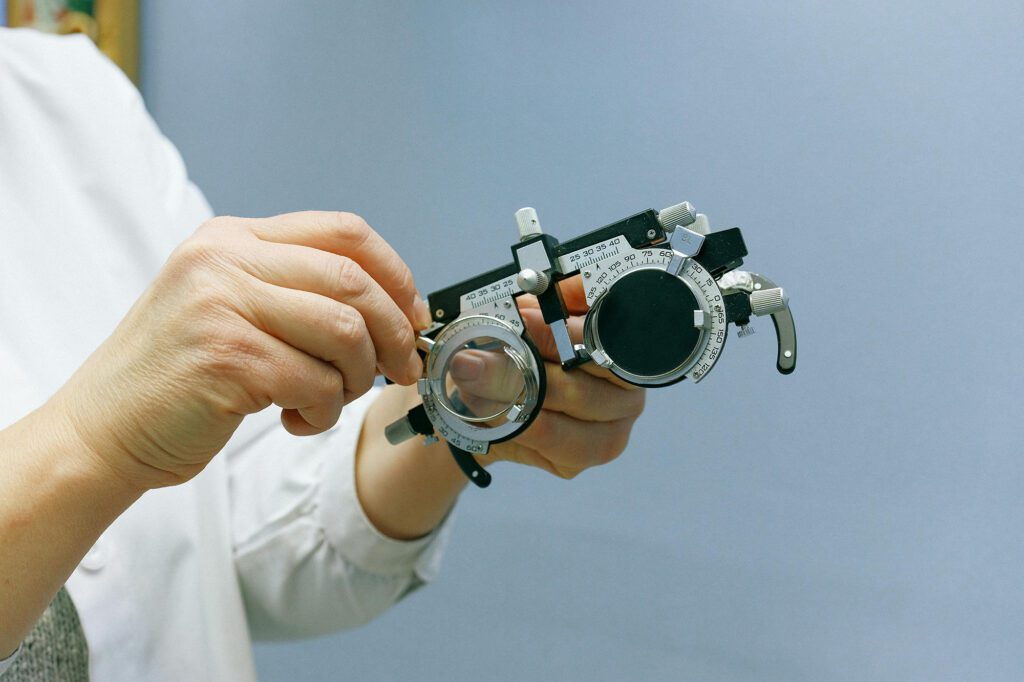
Dry eyes can result from environmental factors like Reno's dry air, certain medications, age-related changes, and prolonged contact lens use. Recognizable by a gritty feeling, burning sensation, and temporary blurred vision, dry eyes are more than just an annoyance.
Combatting dry eyes involves a combination of using lubricating eye drops and avoiding conditions that exacerbate the issue. Regular breaks from screen time, staying hydrated, and using a humidifier can also help.
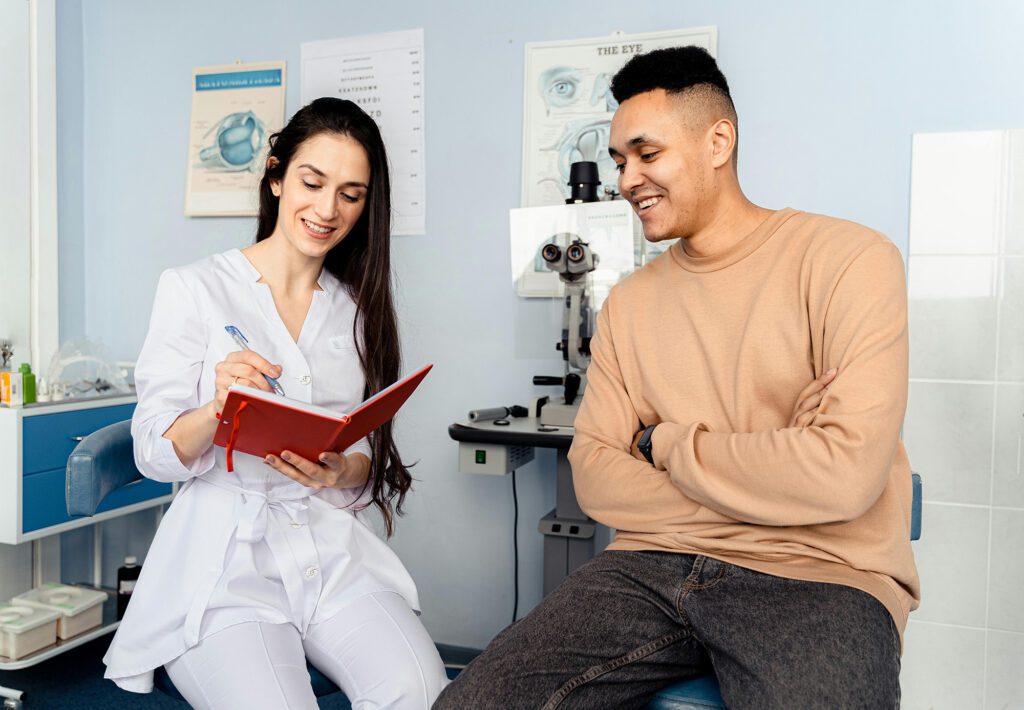
Red eyes can stem from allergies, eye strain, or more serious conditions like infections. Keeping your hands clean, avoiding eye-straining activities, and using appropriate eye protection are key preventative steps.
For temporary relief, cool compresses and proper eyelid hygiene can be effective. However, persistent red eyes may indicate an underlying issue that requires professional attention.
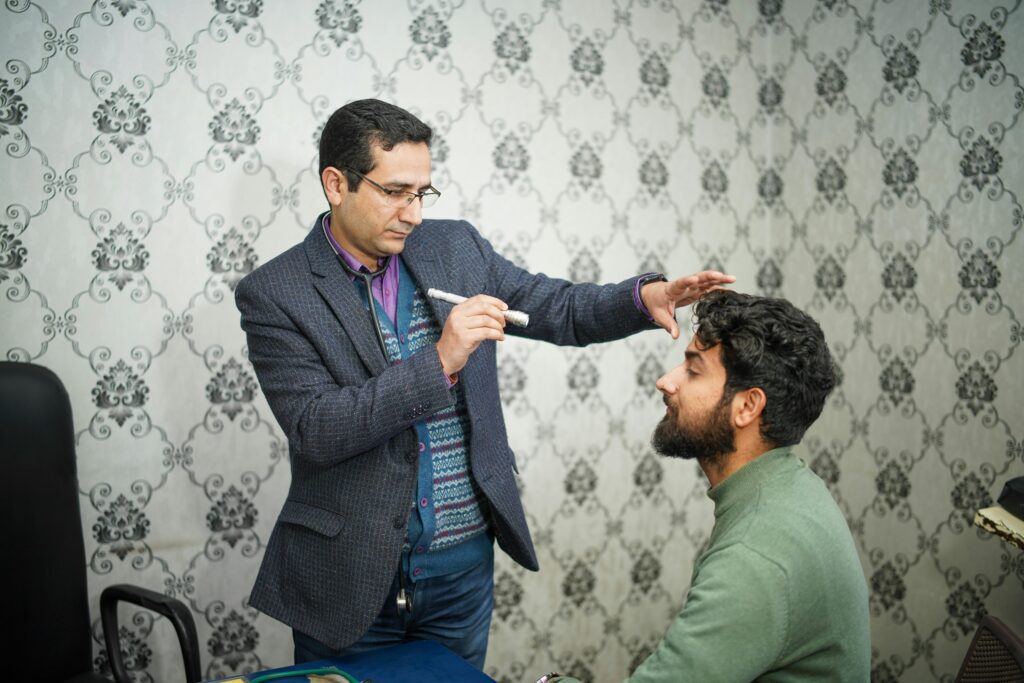
Eye infections, caused by bacteria, viruses, or fungi, often present symptoms like redness, pain, discharge, and light sensitivity. Treatments vary but typically include medicated eye drops or ointments. For contact lens wearers, maintaining good hygiene is crucial for prevention.
Persistent, worsening, or severe symptoms warrant a visit to an eye care professional. Delaying proper care can lead to complications and should be avoided.
Persistent or severe eye problems should prompt a visit to an eye care professional. Self-diagnosis and treatment can delay effective care and potentially lead to complications. Visionary Eye Center in Reno offers expert care for various eye conditions and can provide tailored solutions for your eye health needs.
The world of vision correction has evolved dramatically over the years. From the rudimentary practice of radial keratotomy, eye care has embraced monumental advancements, culminating in the development of Photorefractive Keratectomy (PRK) and LASIK (Laser-Assisted In Situ Keratomileusis). Visionary Eye Center, located in the heart of Reno, NV, has been at the forefront of this evolution, offering a spectrum of cutting-edge solutions for those seeking clearer, sharper vision. Visionary Eye Center are the experts when it comes to the LASIK procedure in Reno.
The early seeds of modern refractive surgery sprouted with the invention of PRK, followed by the birth of LASIK eye surgery. These techniques, far safer and more reliable than radial keratotomy, relied on the precision of lasers to reshape the cornea - the eye's front surface. The differences between the two lay in their application: LASIK involves the creation of a flap laid over the treated area, while PRK applies the laser directly onto the cornea, eschewing a flap. The choice between the two often hinges on individual needs, with LASIK offering a speedier recovery and PRK catering more towards those with larger prescriptions.
But innovation didn't halt there. The advent of LASEK (Laser Epithelial Keratomileusis) introduced a novel technique, gently sliding the epithelium off the eye's front, then replacing it after treatment. This method, while retaining the advantages of PRK and LASIK, significantly reduces dryness compared to LASIK, making it a compelling option for patients prioritizing comfort during recovery.
For individuals with higher prescription requirements or those uneasy with permanently removing corneal tissue, the introduction of the Implantable Contact Lens (ICL) has been a game-changer. This technique involves inserting a small lens between the iris and the eye's natural lens. Notably, the procedure is reversible and inflicts minimal trauma on the eye, providing an attractive solution for patients seeking a trial before a more permanent decision.
The landscape of vision care also offers hope for presbyopic patients, or those over the age of 40. Corneal inlays, like the Kamra or Raindrop, can be inserted into the cornea, creating a pinhole effect that extends the eye's depth of focus and restores near vision. Simultaneously, refractive lens exchange provides another avenue. In this procedure, the natural lens of the eye is replaced with an intraocular implant lens – a procedure akin to cataract surgery. With various setup options available, including distance, monovision, and multifocal setups, presbyopic patients can regain control over their vision.

For those wary of surgery but eager to free themselves from the confines of glasses or contact lenses, Visionary Eye Center is proud to offer orthokeratology. This non-surgical intervention represents an alternative to refractive surgery, and can be an excellent solution for patients seeking another path to visual freedom.
At Visionary Eye Center, we believe in a personalized approach to eye care. As an independent provider, we aren't limited by the constraints of a vertically integrated multi-practice chain, big box store, or national franchise. Our independence empowers us to develop strong doctor-patient relationships, rooted in the belief that every patient deserves custom solutions tailored to their unique visual needs.
Our commitment to personalization extends to our embrace of modern technology. We're able to leverage the latest breakthroughs in eye care, allowing us to offer a wide variety of options to our patients, from state-of-the-art surgical interventions to high-quality eyewear products. Far from being stuck with outdated bulk products, our patients enjoy access to the best the world of vision care has to offer.
In our pursuit of providing unparalleled care, we operate with a firm conviction: an educated patient makes superior health decisions. At Visionary Eye Center, patient education is not an afterthought, but an integral part of our approach. Our dedicated team of professionals endeavors to enlighten every patient about their treatment options, empowering them to make the best choices for their eye health.
We invite you to navigate our website and learn more about the wealth of information we've curated about eyes and vision. For the latest tips, offerings, and updates, follow us on our Facebook and Instagram pages. We eagerly anticipate welcoming you at our office and partnering with you on your journey towards better vision. At Visionary Eye Center, our commitment to you extends beyond simple vision correction—we aim to provide vision for life.
It’s pretty painful to get a sunburn after missing a spot on your skin with sunscreen. Just imagine how a corneal sunburn would affect your quality of life during some of the best weather of the year. Also known as photokeratitis, this issue occurs during short-term exposure to high intensity UV-B rays. Photokeratitis is painful but temporary and is similar to a sunburn, but on your corneas (the clear portion of your eye in front of your pupil) instead of skin. It can look like a yellow, thickened area in the whites of your eyes. Too much exposure with ultraviolet rays can temporarily damage your conjunctiva, which is the clear layer of tissue covering the inside of your eyelid and whites of your eye.
Summertime activities that can put someone at increased risk for photokeratitis include mountain climbing, hiking, skiing, and swimming. It can also occur if you use sunlamps and tanning beds, or spend time in an environment with consistent UV light exposure.
There are two types of UV light proven to contribute to eye, skin, or health issues. UV-A rays can pass through your eye’s cornea to reach the lens and retina. UV-B rays can’t pass through glass but still can cause eye damage.

The symptoms of photokeratitis are pain and redness in the eyes, swelling, light sensitivity, headaches, temporary loss of vision, twitching eyelids, and seeing halos (like in the photo below). They can last from six to twenty-four hours but typically disappear after forty-eight hours.
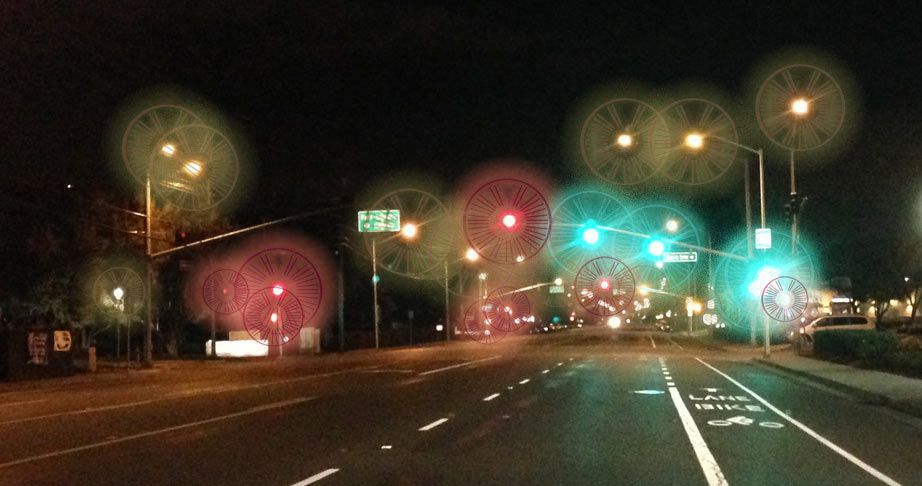
Photokeratitis is most often formally diagnosed after an eye exam, and your doctor will place drops containing a special dye known as fluorescein in your eyes to reveal any superficial irregularities on the surface of your cornea. As for treatment, go indoors immediately after experiencing symptoms and avoid bright lights. Once in a darkened area, place a cold washcloth over your eyes and take ibuprofen. If you wear contact lenses, remove them and use artificial tears to reduce discomfort.
The longer you were exposed to UV lights, the more severe the symptoms. Long term exposure to even the tiniest amount of UV radiation can increase the risk of developing a cataract or macular degeneration (an eye disease that leads to vision loss in the center), or cause tissue elevations on the surface. These conditions are known as pinguecula and pterygium, but can be prevented by wearing sunglasses.
If you wear contacts, ask about ones that absorb UV rays when working or playing in a sunny environment. But even with these types of contacts it’s still important to wear protective sunglasses to shield your eyelids and conjunctiva from the suns’ rays.

The good news is that photokeratitis is preventable simply by wearing the proper eye protection when outside, like prescription sunglasses or snow goggles in the winter. Glare from snow, sand, or water can cause burns to your eyes even if it’s overcast. A wide brimmed hat can help filter out the sun’s rays as well.
When purchasing a pair of sunglasses, it’s worth noting that not all sunglasses are polarized. Polarized sunglasses are manufactured in a distinctive way that creates a different pattern in the lens to block out more light than a usual pair of sunglasses. When choosing a pair, look for one that provides one hundred percent UV protection or UV 400 protection. Prescription sunglasses help with overall light sensitivity, headaches caused by glare, and regular eye strain from squinting in bright sunlight.
For more information, check out our other blog post on prescription sunglasses here.
Be sure to visit your eye specialist once a year to stay up on your eye health and catch any issues early. It’s never been a better time to make an appointment with the team at Visionary Eye Center to get the perfect pair of prescription sunglasses for your summer adventures.
Our Reno eye care facility is one of the best in preventing photokeratitis in our patients.
Schedule an Exam with an Eye Doctor in Reno
As the school year comes to an end, it’s important to make sure that your child’s eye health remains on track during the summer and beyond. Younger generations are more susceptible to myopia, which is caused by the lengthening of the eye from front to back. Consequently, light is focused in front of the retina and not directly on it, causing distant objects to be blurry. The best way to prevent child myopia from developing or worsening is to get them in to see a Reno optometrist who will create a treatment plan designed specifically for their eye needs.
Myopia is prominent in children today because of environmental factors ranging from poor lighting and not enough time outdoors to excessive screen time. Genetics also can play a role based on if both parents or only one is myopic. A fifty percent chance of myopia is possible if both parents have it, a thirty-three percent chance if one parent has it, and a twenty-five percent chance if neither parent is myopic.
Children who spend at least two hours a day outside with sunglasses on are less likely to become myopic. However, researchers found that once a child has become nearsighted, outdoor time does not slow myopia progression.
Myopia can put an individual at risk for complications like retinal detachment, glaucoma, cataracts, chorioretinal degeneration, and more as they age. It is definitely considered an epidemic with a forty percent diagnosis rate in young patients and climbing.
Another increasingly common issue in children today is eye turns, or strabismus. Known as being “cross-eyed,” it’s the result of excessive focusing. Sometimes it is a genetic issue in children, and other times it can be developed between the ages of one year to four years. We can detect and treat both of these issues with vision therapy and surgical treatments, all while ensuring you or your child have the proper depth perception.
The MiSight 1-day program is FDA approved and helps optometrists across the country change the futures of young patients on the road to myopia. According to CooperVision, the corporation behind the high-quality contact lenses, age-appropriate children wearing MiSight experience an average of 59% reduction in myopia progression during a three-year period. There’s also a 52% reduction in eye lengthening, and more than 90% of children continued to express a strong preference for MiSight 1-day contact lenses over their glasses at the five-year check-up. Their parents expressed the same sentiment as well.
We typically recommend MiSight for lower levels of myopia (approximately -1.00 or less), over alternatives like Ortho K for myopia control. If you’d like to learn more about the efforts to educate people and prevent worsening side effects of myopia, check out CooperVision’s Facebook page and YouTube channel.
Over half of the country’s eye care practitioners agree that if myopia is left untreated, it will lead to irreversible vision loss. After some time, detrimental diseases like retinal detachment or myopic maculopathy are possible. MiSight lenses accommodate a more active lifestyle, provide and correct distance vision immediately, and are comfortable at any age.
As a pediatric optometrist in Reno NV, Visionary Eye Center has plenty of experience helping children and even their parents navigate the different tests and procedures for evaluating vision and eye health. Here is a quick rundown of what some of the most common machines we use to treat myopia while lessening its side effects over time:
One of the machines our practice utilizes is the Zeiss IOLMaster for axial length measurements, as it’s the best way to monitor myopia progression. This equipment for ocular biometry measures the size of the eyeball, originally designed to calculate the dioptric power of intraocular lenses implants (IOLs) for cataract surgery, but is now used by leading myopia control doctors to track the growth of the eye.

This is something that can be easily monitored in children because when the elongation progresses beyond 26 millimeters, the risk of potential vision impairment increases dramatically. Even better, this machine is quick and painless – we can measure both of a patient’s eyes in less than a minute!
Measuring axial length is a vital measurement when looking at treatment, as using prescription alone is too variable. Unfortunately, many doctors haven’t equipped their offices with the technology at this time– but we have it here at Visionary Eye Center, setting us apart as experts treating myopia at a higher level.
Measuring axial length is also the only way to track myopic elongation in orthokeratology. Orthokeratology, or Ortho-K, creates specially designed corneal molds to considerably reshape the eye overnight as part of an FDA-approved process for all ages. Similar to how dental braces can reshape your teeth, Ortho-K processes help fix those refractive errors that cause myopia or hyperopia and astigmatism as well.

Topography maps are taken using our Keratograph 5M and are used for fitting contacts like MiSight, as well as dry eye testing with the Crystal Tear Report. It’s an incredibly helpful tool for the diagnosis of and education about dry eye. As an advanced corneal topographer, the Keratograph can examine the meibomian glands in infrared imaging and evaluate the tear lipid layer. The Keratograph is effective in measuring the tear film break-up time and the tear meniscus height measurement in a non-invasive, painless way for patients.
The Maestro is used for the screening of glaucoma, cataracts, diabetic retinopathy, and macular degeneration. Taking a look at a patient’s retina, optic nerve, and anterior segment of the eye is a much quicker practice than before. Using Maestro technology allows our Reno optometrist to rapidly and clearly analyze various functions and facets of the eye for the most reliable results.
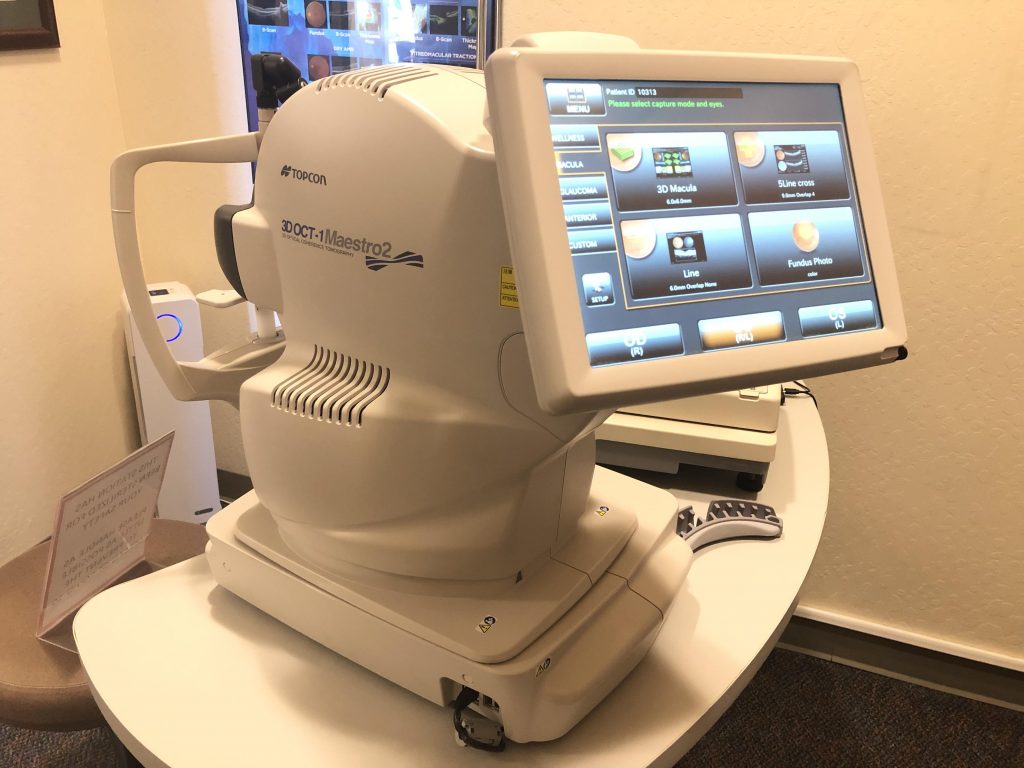
The team frequently relies on Pentacam technology to custom design gas permeable (GP) and scleral contact lenses. Gas permeable contacts are made of firm, durable polymers with high oxygen permeability. High oxygen permeability helps keep eyes healthy with orthokeratology for myopia control or scleral lenses. The Pentacam allows our Reno optometrists to create a 3D model of the front surface of the eye which can be used to design highly customized contact lenses.
All in all, we strive to have the best technology for our patients and the services and scans provide vast treatment options. If you’re struggling with myopia, dry eye, or the after-effects of either of these conditions, Dr. Jason Bolenbaker is here to help.
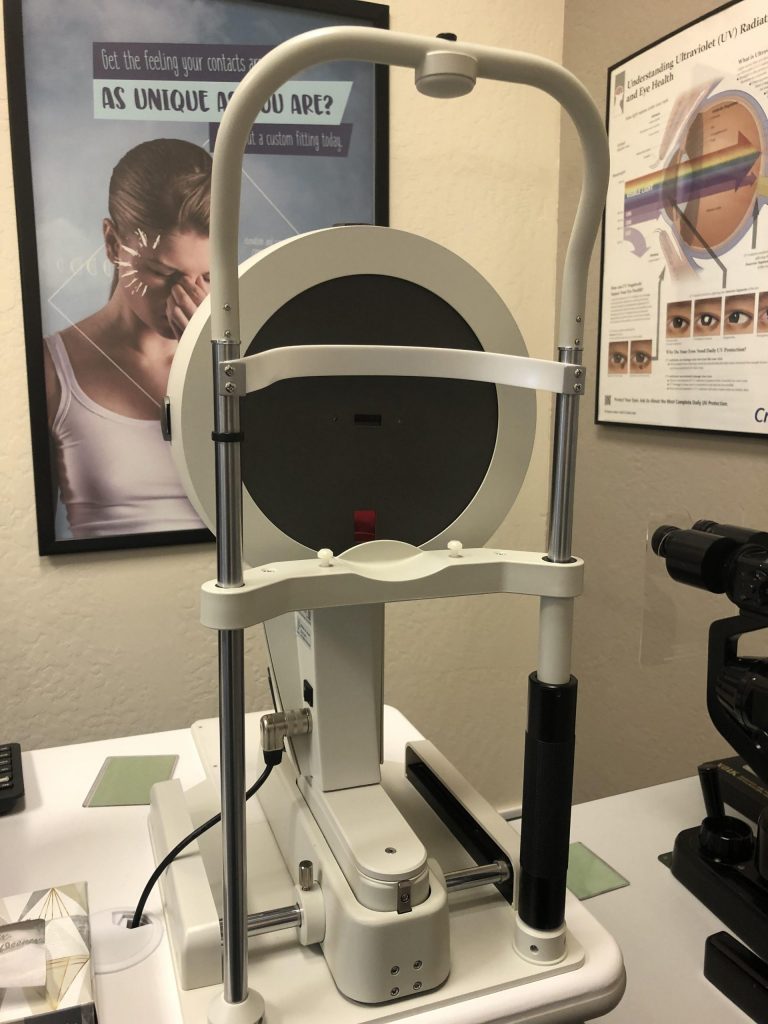
All in all, we strive to have the best technology for our patients and the services and scans provide vast treatment options. If you’re struggling with myopia, dry eye, or the after-effects of either of these conditions, Dr. Jason Bolenbaker is here to help.
The MiSight program is just one of the ways we reach our goals based on our philosophy of how an educated patient makes better health decisions for their families. We want our patients to be educated on every treatment option offered to them, and make the best choices for their care.
Our team of optometrists in Reno is ready to help patients of all ages begin their eyesight correction journey and prevent any further issues. Contact the Visionary Eye Center today and make an appointment with a medical care team you can trust.
For those that suffer from nearsightedness (myopia) or astigmatism, there may be a better solution out there for you than wearing corrective lenses daily or undergoing risky surgery. The latest method of myopia control in Reno is the use of orthokeratology, or ortho-k, which is accomplished through a retainer lens worn solely at night while you sleep. Not only is ortho-k a great treatment for patients seeking unique or custom eye care, it also offers freedom from the hassles of daily wear correction methods like soft contact lenses and glasses.
If you or someone you know is struggling with myopia or astigmatism and the traditional treatment methods aren’t meeting your active lifestyle needs, connect with Northern Nevada optometrist Dr. Bolenbaker to discuss the possibility of starting orthokeratology.
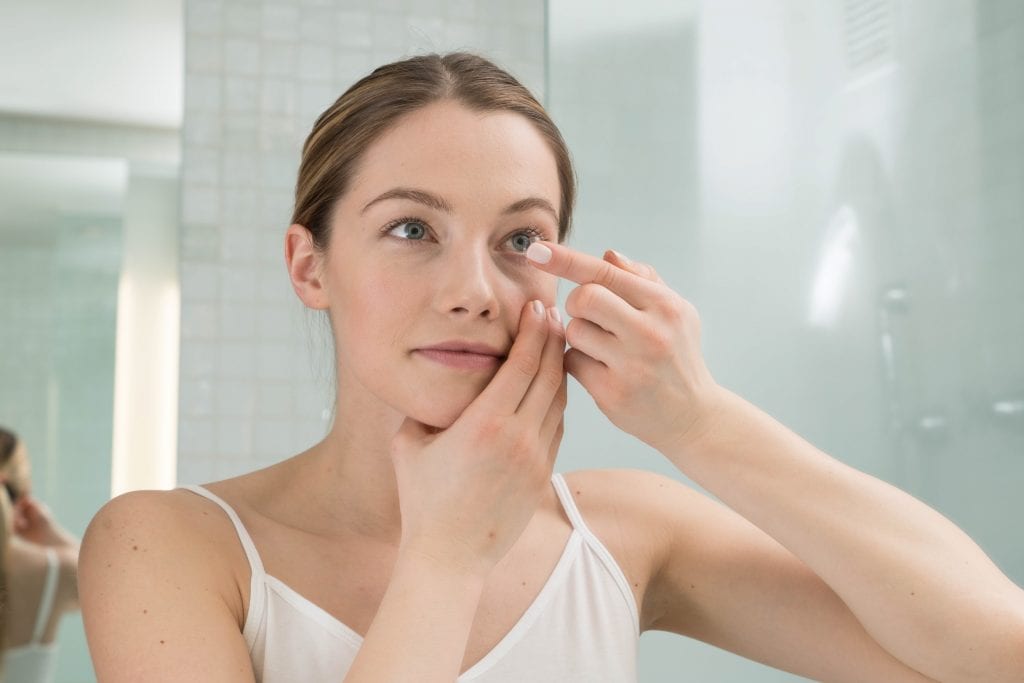
Orthokeratology, also called ortho-k, corneal refractive therapy, or gentle vision shaping, is a non-surgical method of reshaping the cornea for improved vision. Ortho-k is a custom eye care solution that uses fitted corneal molds and retainers to put gentle hydraulic pressure on the cornea that flattens its surface to correct the way your eye takes in light. It works similarly to LASIK with the risks of surgical complications and dry eye. And unlike contact lenses worn during the day, ortho-k treatments work overnight so you are free from correction while you are awake.
To fully understand how orthokeratology works, you first have to understand how our eyes take in light and transform it into an image that we’re able to see. When light rays are focused properly through the cornea and reach the retina, you see a clear image. When there is a mismatch between the curvatures in the cornea and the length of the eye, light cannot be focused properly thus resulting in blurred vision.
Ortho-k works to reshape the cornea so that incoming light bends accordingly, presenting a clearer image. Unlike everyday contact lenses that are worn to correct vision while awake, ortho-k lenses use gentle hydraulic forces to temporarily reshape the cornea for prolonged effects. Wearing the molds at night results in effects that last well into the next day which is why this has become a preferred method of myopia control in Reno for active children.

Good candidates for the ortho-k treatment include patients with mild to moderate myopia or nearsightedness, or those with minor astigmatism. Orthokeratology is FDA approved to correct nearsighted patients with prescriptions under -6.00D of myopia and less than -1.75D of astigmatism. Children make great candidates for this method of myopia control due to their typically mild symptoms and flexible corneas. Adults that would prefer a non-surgical correction option may also be a great candidate.
Myopia, more commonly known as nearsightedness, is a refractive error that causes blurred vision when looking at objects that are far away. This is typically due to axial elongation, making the eye longer than the cornea curvature can focus the light taken in by the eye. Ortho-k has been shown in multiple studies to slow the elongation of an of the eye. It is hypothesized that the peripheral myopic defocus along the horizontal and vertical meridians of the eye induced by wearing ortho-k molds tricks the eye into thinking it has grown too long, halting the signal for continued growth. If the eye does not continue to grow, myopia progression is decelerated, thus slowing the worsening of your nearsightedness.
As with any sort of corrective lens to improve vision, there may be some risks involved, however, the risk of adverse effects caused by ortho-k is extremely low. The symptoms you may experience while using orthokeratology are very similar to the risks associated with wearing traditional contact lenses. Essentially, the risks can easily be prevented and managed with good hygiene practices.
Ultimately, the benefits of ortho-k largely outweigh the risks associated with the treatment method. One of the most notable benefits of orthokeratology is its ability to effectively improve vision while the patient is asleep, thus not impeding their daily activities. The most common list of risks and benefits are as follows:

Here, at the Visionary Eye Center, we strive for customized eye care solutions for our Reno-Sparks patients. As each patients’ needs are unique, our treatment should be as unique as you.
March is National Save Your Vision Month, so what better time to schedule your annual eye exam. With Spring Break quickly approaching, it’s the perfect time for the whole family to see an optometrist in Reno. Dr. Bolenbaker and his team at the Visionary Eye Center look forward to meeting you and your family and taking care of your eye vision needs. As the best eye doctor in Reno, we offer pediatric eye care services to ensure that your child is developing proper depth perception, essential binocular skills and more.

Preventative eye care is important because eyesight is one of the most important senses. Eighty percent of what we perceive is because of our eyesight, so protecting your eyes will reduce the chance of blindness, vision loss, and long term eye diseases like cataracts and glaucoma. Vision disability is one of the top 10 disabilities among adults 18 years and older, and is one of the most prevalent disabling conditions among children. Because of our aging population, the CDC reports that the number of visually impaired individuals in the United States will double by 2030 and triple by 2050.
Other reasons to see an eye doctor in Reno include getting assistance with any decreased vision, eye pain, or double vision issues. We strongly encourage people to take care of their vision health, and the first step to it is making sure to schedule an annual eye exam. Visionary Eye Center can offer these important services in addition to exams:
Take care of your eyes and correct mild cases of farsightedness and presbyopia by beginning the safe processes of orthokeratology, myopia control, and more at our center today. The Lasik procedure is a great refractive practice to help with easily fixing any vision issues too.
Our Reno family eye care center is also one of the only low vision specialty clinics around, and there’s nothing more enriching than helping the partially sighted regain their independence.

We want the Reno community to be well informed on the best eye health decisions all year round. We offer several services for your eye health, whether it’s dry eye care, contact lenses, or myopia control. Don’t put off something as important as preventative eye care. The team at Visionary Eye Center are Reno optometrists with plenty of experience. Click here to schedule an appointment today. Please don’t hesitate to contact us with any general inquiries or concerns, and we look forward to meeting you!
Here at Visionary Eye Center, we treat plenty of patients with blepharitis, so you aren’t alone. An estimated 82 million Americans have been diagnosed with the eyelid disease. As eye doctors in Reno with decades of experience, we strive to make sure that our patients understand the cause of blepharitis: simply just an abundance of bacteria near the eyelids.
Because the disease contributes to dry eye syndrome, it leads to other symptoms like itching, a gritty feeling in the eyes, eyelid crusting that looks like dandruff, and red, swollen eyes. In addition to serious discomfort, blepharitis can negatively affect those scheduled or in the process for cataract or LASIK refractive surgeries. If left untreated, blepharitis can cause patients to experience chronic red-eyes, styes, or damage to their corneas.
There are two different types of blepharitis: posterior and anterior. Posterior blepharitis is usually caused by inflammatory conditions like rosacea. Anterior blepharitis is typically caused by microbes like Staphylococcus bacteria (which causes staph infections) and Demodex mites.
Demodex are mites that live on skin and thrive in hair and lash follicles. Younger children or the elderly are more likely to have an abundance of mites. Demodex mites’ average lifespan is estimated to be several weeks, but that is enough time to cause serious cases of blepharitis. They cause irritation with burrowing and laying eggs, and producing small amounts of waste products which feeds further bacterial growth.
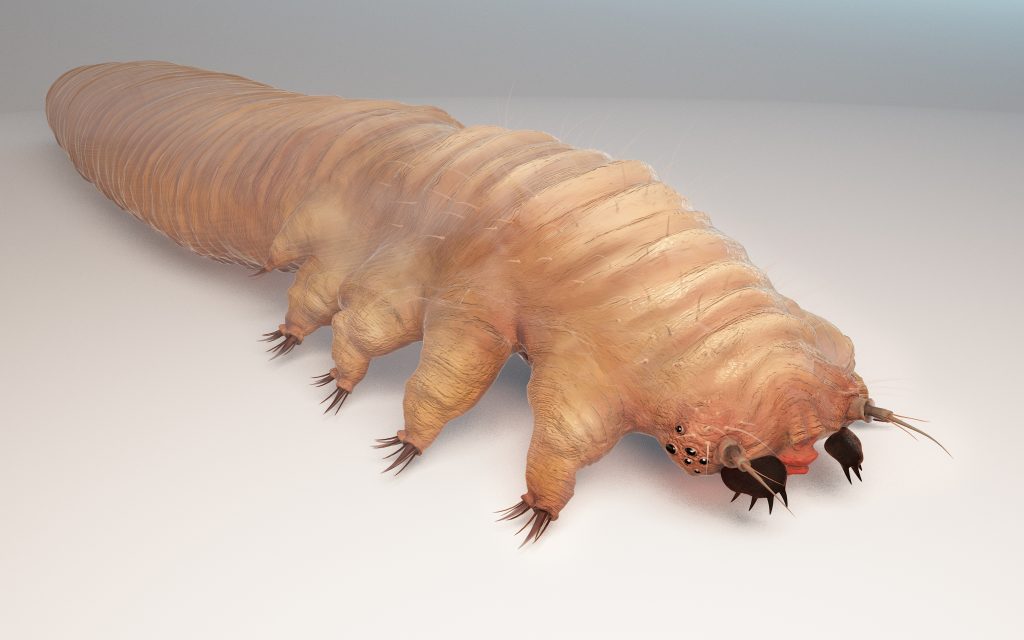
Treatment for blepharitis is possible. One common option for Reno optometrists to utilize is ZEST, or Zocular Eyelid System Treatments. It works by gently exfoliating the eyelids to restore the natural state and cleans the eyelid margins to open up the meibomian gland. ZEST ensures the glands can release oils into the eye to create a healthy tear film and reduce symptoms of dry eye, all while providing thorough treatment for blepharitis and other potential diseases. This natural procedure is completed in about ten minutes and helps solve crusting around the eye.
Blepharitis can damage the meibomian glands along the edge of the eyelid where the eyelashes are. These glands create oil needed for tears. The oily layer is the outside of the tear that prevents them from drying too quickly. A number of eye issues can involve these glands, and for more information on additional treatments and procedures, head to our informational page on dry eye syndrome.
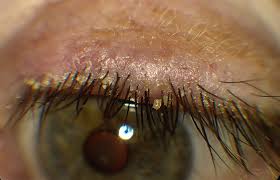
It is not too late to seek out treatment for Demodex mites on your lids or blepharitis. With a variety of eye care methods, including the use of ZEST, the team here at Visionary Eye Center can relieve your eye concerns. Book an appointment today with the best Reno optometrists in the city.
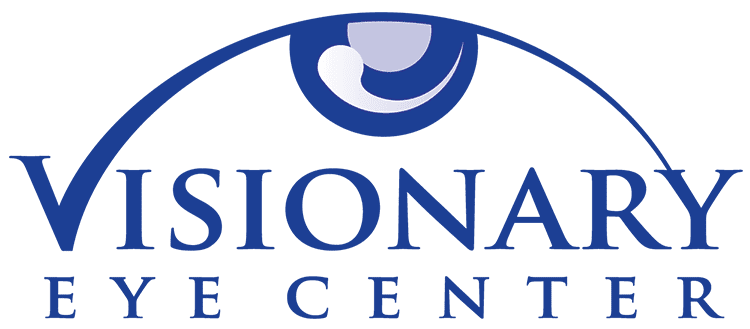 775.827.1100info@visionaryeyecenter.com8175 South Virginia Street Suite B-900
775.827.1100info@visionaryeyecenter.com8175 South Virginia Street Suite B-900